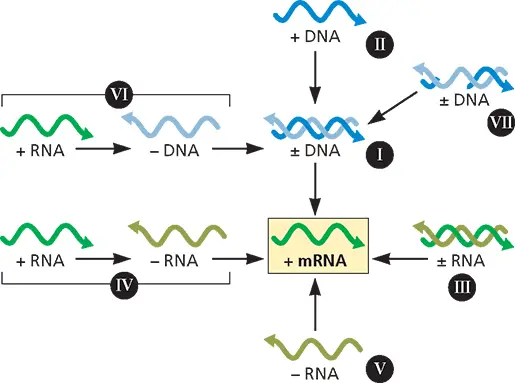Jane Flint - Principles of Virology, Volume 1
Здесь есть возможность читать онлайн «Jane Flint - Principles of Virology, Volume 1» — ознакомительный отрывок электронной книги совершенно бесплатно, а после прочтения отрывка купить полную версию. В некоторых случаях можно слушать аудио, скачать через торрент в формате fb2 и присутствует краткое содержание. Жанр: unrecognised, на английском языке. Описание произведения, (предисловие) а так же отзывы посетителей доступны на портале библиотеки ЛибКат.
- Название:Principles of Virology, Volume 1
- Автор:
- Жанр:
- Год:неизвестен
- ISBN:нет данных
- Рейтинг книги:5 / 5. Голосов: 1
-
Избранное:Добавить в избранное
- Отзывы:
-
Ваша оценка:
- 100
- 1
- 2
- 3
- 4
- 5
Principles of Virology, Volume 1: краткое содержание, описание и аннотация
Предлагаем к чтению аннотацию, описание, краткое содержание или предисловие (зависит от того, что написал сам автор книги «Principles of Virology, Volume 1»). Если вы не нашли необходимую информацию о книге — напишите в комментариях, мы постараемся отыскать её.
Volume I: Molecular Biology
Volume II: Pathogenesis and Control
Principles of Virology, Fifth Edition
Principles of Virology, Volume 1 — читать онлайн ознакомительный отрывок
Ниже представлен текст книги, разбитый по страницам. Система сохранения места последней прочитанной страницы, позволяет с удобством читать онлайн бесплатно книгу «Principles of Virology, Volume 1», без необходимости каждый раз заново искать на чём Вы остановились. Поставьте закладку, и сможете в любой момент перейти на страницу, на которой закончили чтение.
Интервал:
Закладка:
8 Explain why no infectious viruses are observed in the cell culture medium during the latent phase of a onestep growth curve.
9 You infect a plate of one million cells at an MOI of 100. The particle-to-PFU ratio for this virus is 1,000. How many total virus particles did you add to the cells?
3 Genomes and Genetics

Introduction
Genome Principles and the Baltimore System
Structure and Complexity of Viral Genomes DNA Genomes RNA Genomes
What Do Viral Genomes Look Like?
Coding Strategies
What Can Viral Sequences Tell Us?
The “Big and Small” of Viral Genomes: Does Size Matter?
The Origin of Viral Genomes
Genetic Analysis of Viruses Classical Genetic Methods Engineering Mutations into Viral Genomes Engineering Viral Genomes: Viral Vectors
Perspectives
References
Study Questions
LINKS FOR CHAPTER 3
Virocentricity with Eugene Koonin http://bit.ly/Virology_Twiv275
CRISPR-Cas immune systems https://www.microbe.tv/twim/twim-184/
… everywhere an interplay between nucleic acids and proteins; a spinning wheel in which the thread makes the spindle and the spindle the thread.
ERWIN CHARGAFF, 1955
Introduction
Earth abounds with uncountable numbers of viruses of great diversity. However, because taxonomists have devised methods of classifying viruses, the number of identifiable groups is manageable ( Chapter 1). One of the contributions of molecular biology has been a detailed analysis of the genetic material of representatives of major virus families. From these studies emerged the principle that the viral genomeis the nucleic acid-based repository of the information needed to build, reproduce, and transmit a virus ( Box 3.1). These analyses also revealed that the thousands of distinct viruses defined by classical taxonomic methods can be organized into seven groups, based on the structures of their genomes.
Genome Principles and the Baltimore System
A universal function of viral genomes is to specify proteins. However, none of these genomes encode the complete machinery needed to carry out protein synthesis. Consequently, one important principle is that all viral genomes must be copied to produce messenger RNAs (mRNAs) that can be read by host ribosomes. Literally, all viruses are parasites of their host cells’ translation system.
A second principle is that there is unity in diversity: evolution has led to the formation of only seven major types of viral genome. The Baltimore classification system integrates these two principles to construct an elegant molecular algorithm for virologists ( Fig. 3.1). When the bewildering array of viruses is classified by this system, we find seven pathways to mRNA. The value of the Baltimore system is that by knowing only the nature of the viral genome, one can deduce the basic steps that must take place to produce mRNA. Perhaps more pragmatically, the system simplifies comprehension of the extraordinary reproduction cycles of viruses.
The Baltimore system omits the second universal function of viral genomes, to serve as a template for synthesis of progeny genomes. Nevertheless, there is also a finite number of nucleic acid-copying strategies, each with unique primer, template, and termination requirements. We shall combine this principle with that embodied in the Baltimore system to define seven strategies based on mRNA synthesis andgenome replication. The Baltimore system has stood the test of time: despite the discovery of multitudes of viral genome sequences, they all fall into one of the seven classes.
Replication and mRNA synthesis present no obvious challenges for most viruses with DNA genomes, as all cells use DNA-based mechanisms. In contrast, animal cells possess no known systems to copy viral RNA templates and to produce mRNA from them. For RNA viruses to propagate, their RNA genomes must, by definition, encode a nucleic acid polymerase.
Structure and Complexity of Viral Genomes
Despite the simplicity of expression strategies, the composition and structures of viral genomes are far more varied than those seen in the entire archaeal, bacterial, or eukaryotic domains. Nearly every possible method for encoding information in nucleic acid can be found in viruses. Viral genomes can be
DNA or RNA
DNA with short segments of RNA
DNA or RNA with covalently attached protein
single-stranded (+) strand, (–) strand, or ambisense ( Box 3.2)
double stranded
linear
circular
segmented
gapped
PRINCIPLES Genomes and Genetics
The genomes of viruses range from the extraordinarily small (<2 kb) to the extraordinarily large (>2,500 kbp); the diversity in size likely provides advantages in the niches in which particular viruses exist.
Viral genomes specify some, but never all, of the proteins needed to complete the viral reproductive cycle.
That only seven viral genome replication strategies exist for all known viruses implies unity in viral diversity.
Some genomes can enter the reproduction cycle upon entry into a target cell, whereas others require prior repair or synthesis of viral gene products before replication can proceed.
Although the details of replication differ, all viruses with RNA genomes must encode either an RNA-dependent RNA polymerase to synthesize RNA from an RNA template or a reverse transcriptase to convert viral RNA to DNA.
The information encoded in viral genomes is optimized by a variety of mechanisms; the smaller the genome, the greater the compression of genetic information.
The genome sequence of a virus is at best a biological “parts list” and tells us little about how the virus interacts with its host.
Technical advances allowing the introduction of mutations into any viral gene or genome sequence are responsible for much of what we know about viruses.
BOX 3.1
BACKGROUND
What information is encoded in a viral genome?
Gene products and regulatory signals required for
replication of the genome
efficient expression of the genome
assembly and packaging of the genome
regulation and timing of the reproduction cycle
modulation of host defenses
spread to other cells and hosts
Information notcontained in viral genomes:
genes encoding a complete protein synthesis machine (e.g., no ribosomal RNA and no ribosomal or translation proteins)
genes encoding proteins of membrane biosynthesis
telomeres (to maintain genomes) or centromeres (to ensure segregation of genomes)
this list becomes shorter with each new edition of this textbook!

Figure 3.1 The Baltimore classification. All viruses must produce mRNA that can be translated by cellular ribosomes. This classification system traces the pathways from viral genomes to mRNA for the seven classes of viral genomes.
The seven strategies for expression and replication of viral genomes are illustrated in Fig. 3.2to 3.8. In some cases, genomes can enter the replication cycle directly, but in others, genomes must first be repaired, and viral gene products that participate in the replication cycle must first be synthesized. Examples of specific viruses in each class are provided.
Читать дальшеИнтервал:
Закладка:
Похожие книги на «Principles of Virology, Volume 1»
Представляем Вашему вниманию похожие книги на «Principles of Virology, Volume 1» списком для выбора. Мы отобрали схожую по названию и смыслу литературу в надежде предоставить читателям больше вариантов отыскать новые, интересные, ещё непрочитанные произведения.
Обсуждение, отзывы о книге «Principles of Virology, Volume 1» и просто собственные мнения читателей. Оставьте ваши комментарии, напишите, что Вы думаете о произведении, его смысле или главных героях. Укажите что конкретно понравилось, а что нет, и почему Вы так считаете.



